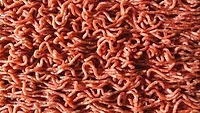Foodborne Illness-Causing Bacillus Strains Common in Plant-Based Dairy Ingredients, Study Finds

Image credit: Sandi Benedicta via Unsplash
Recent sampling and testing of ingredients used for plant-based dairy alternatives has revealed highly variable microbial loads among ingredients, although many samples contained a high proportion of spore-forming microbes as part of the total counts.
The study surveyed 88 different plant-based ingredients from 12 different suppliers, including pulses (34 pea, 13 faba bean, two mung bean, and one chickpea), cereals/pseudocereals (20 oat, one rice, one amaranth, and one quinoa), and drupes (nine almond, five coconut, and one cashew).
In pulse samples, which accounted for 57 percent of total number of ingredients that were analyzed, significant variation in microbial loads was observed not only between samples of the same ingredient source, but also between individual samples of the same source and type. Overall, the total viable count (TVC) in the pulse group ranged between 1.0 Log10 colony forming units per gram (CFU/g) and 4.5 Log10 CFU/g, and 62 percent of all samples yielded total aerobic mesophilic spore counts (TMS) greater than 1.0 Log10 CFU/g with a maximum of 4.1 Log10 CFU/g.
Similar to pulses, drupes showed a large variation in microbial counts among the samples, with 87 percent of samples resulting in TVC greater than 1.0 Log10 CFU/g, up to a maximum of 5.3 Log10 CFU/g in almond paste. In (pseudo)cereals, the TVC ranged from values below the level of detection to 4.1 Log10 CFU/g with 65 percent of samples showing microbial loads greater than 1.0 Log10 CFU/g. TMS counts ranged from values below the level of detection to 4.1 Log10 CFU/g in (pseudo)cereals, and from less than 1.0 Log10 CFU/g to 3.5 Log10 CFU/g in drupes.
In total, 845 individual bacterial colonies were isolated belonging to 33 different genera. Known food spoilers and illness-causing microbes like Bacillus licheniformis and B. cereus group strains were most frequently detected among Bacillus isolates, and these species originated primarily from pea and oat samples. Geobacillus stearothermophilus was the main species encountered as part of the heat-resistant aerobic thermophilic spore count (HRTS).
Strains with potential to cause foodborne infection or intoxication were typed using the polymerase chain reaction (PCR)-based method for toxin genes detection. In the B. cereus group, 9 percent of isolates contained the ces gene (carboxylesterase), 28 percent contained hbl (hemolysin), 42 percent contained cytK (cytotoxin K), and 69 percent were positive for the nhe gene (nonhemolytic enterotoxin). Nearly all (98 percent) of B. licheniformis isolates were positive for the lchAA gene (lichenysin A).
Insight into the occurrence of microbial contaminants in plant-based ingredients, combined with knowledge of their key inactivation and growth characteristics, can be used for the microbial risk assessment and effective design of plant-based food processing conditions and formulations to ensure food safety and prevent spoilage.
Looking for quick answers on food safety topics?
Try Ask FSM, our new smart AI search tool.
Ask FSM →









